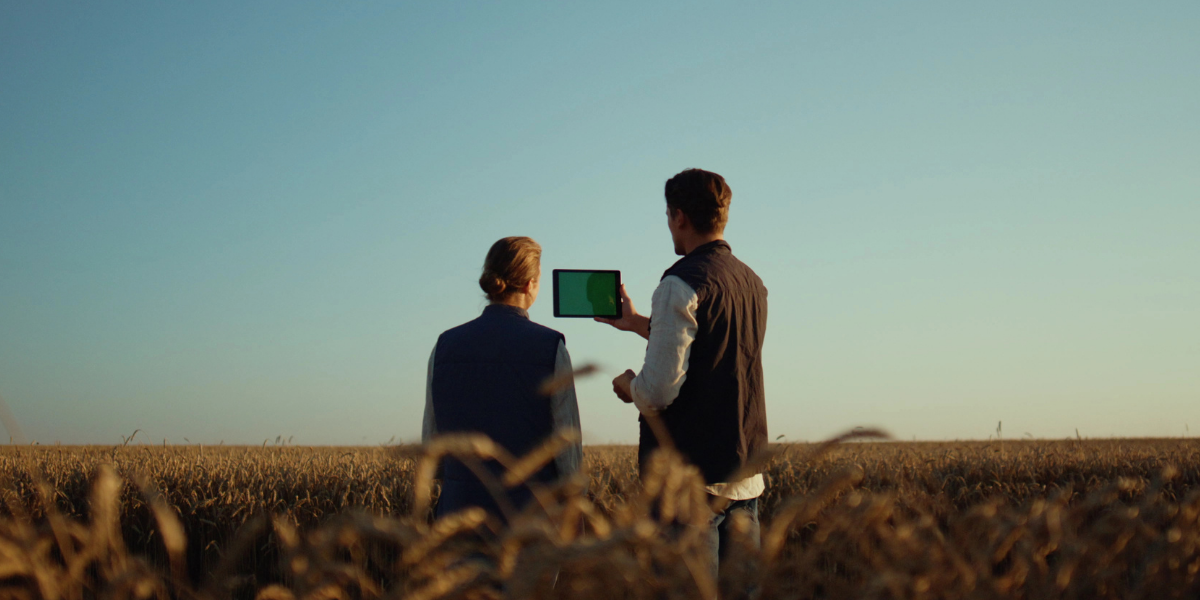In this interview, Foods Connected’s talented implementation manager, Jerome Lunney, discusses his journey from food science to launching his own Poco Picante salsa, sharing insights on new product development, traceability, packaging, and working with national retailers.
Hi Jerome, can you tell us a little about yourself?
I'm based in Fermanagh and studied food science at university. After graduation, I went to Australia and worked across the industry in various roles from technical, NPD to supply chain, before coming to work for Foods Connected in the APAC team. I then left the business, went travelling and on returning to the UK rejoined Foods Connected as an implementation manager for the Protein Optimise and Procurement team.
I'm also the founder of Northern Irish salsa brand Poco Picante.
2. What attracted you to a career in food?
I was always interested in science but didn't really know where to go from there. I’d looked at pharmacy and veterinary, but food was more varied. So, I studied food science at university right up to the master's level.
I then found myself drawn to new product development, manufacturing, processing and the food marketing areas, doing placements in technical, NPD and supply chain.

When did you start thinking about your salsa brand Poco Picante?
At the end of 2023 I returned to the UK, but not before travelling through Central and Latin America. I realised there's a very big difference between what you can buy on the streets of Mexico and what we've got here. A lot of the products we use here are Tex-Mex. I saw an opportunity to create something new that was more authentic and, because the Latin diet is so healthy and plant-focused, healthier too.
And what made you go from the initial idea to deciding to create this product?
I was sort of testing the idea – and the products – with family and friends. It was quite new to them, as they had never really tried authentic salsa sauces before.
There's a very big difference between what you can buy on the streets of Mexico and what we've got here. I saw an opportunity to create something new that was more authentic and healthier too.
Then the more I looked into the market, the more I noticed that there was a gap I could fill. Eventually curiosity probably got the better of me. With my food background, it didn’t seem so daunting to take it from idea to prototype to fully fledged product.
And how did you go from prototype to the Poco Picante product launch?
There were so many different avenues I had to explore from taste testing to marketing and packaging. It all came back to the NPD stage-gate process. First, there was the product I started with, which evolved because I had to make it shelf stable. That was the first challenge.
The next thing was packaging – I had to choose the right packaging format that would work and keep the product shelf stable. And then beyond that was marketing. That was trying to create all of the branding and then make sure it was fully legal and compliant.
These were all the early-stage elements of the product, but then I had to think how am I actually going to make it, distribute it and market it. It definitely didn’t happen overnight. And then I had to confidently take it to market and start to test it in with local independent shops.
How did you decide Poco Picante would be an ambient product?
Being ambient was probably one of the biggest decisions. It came down to shelf life. As a small producer, it's hard to create a product that has a cold chain, primarily because of the upfront costs involved for refrigeration. Then, getting it moved around is more expensive because you have to think about refrigerated transport – and then the low shelf life is risky.
When you're a completely new product and a new brand you need all the time you can at the beginning for people to find your product and start to become accustomed to it. Ambient suits that better – you have a longer time to attract customers. Especially when it’s not necessarily a fast-moving consumer good or an everyday essential.
Talk about how you made your packaging choices
I knew I was launching in one of the most competitive categories. There are so many other brands and businesses competing in that space – and some have very large budgets. It can be a struggle, so I had to do everything possible to make the product stand out.
When you're a completely new product and a new brand you need all the time you can at the beginning for people to find your product and start to become accustomed to it.
But this also forced me to think about the format of my product. I could have opted for a glass jar or a bottle, but for several reasons I decided not to. These were a) to make the product stand out and b) and to make it easier to ship, avoiding breakages in transit. The fact that the lightness of the pouch made it environmentally friendly also helped.
I also had to think about format and how the product would be used. Traditionally here, salsas are considered a chipping dip. So, people would just use them as a dip. But in Central America, they're used as a pour over sauce – locals would pour it over their dishes in Mexico and Guatemala. We don't do that. We have never really have done that with salsas and the current format doesn't really accommodate it. You're very unlikely to sit down with a jar and a spoon and start scooping over your food. Whereas the format I went with allows you to actually pour it over.
That’s also why the formulation is thinner. The UK consumer is used to a chunkier salsa and that's not authentic. You won't find chunky salsa like we are accustomed to in Mexico or any of these places.
What's been the most challenging part of your NPD journey so far?
Probably establishing the brand in the market because we were completely new. When people aren’t familiar with a brand, it takes time to break in. Especially when you are trying to get distributed in as many places as possible.
The hardest part is getting established when you are building up credibility, not just for end customers, but also with B2B customers who may have never heard of you. There’s also the fact that because the product is so new and innovative, it can be hard to communicate that it's a local Northern Irish or Irish product.
A challenge we have here in Northern Ireland is that we don't have any clear indicators to put on the pack to help customers know that it's a local product – and that is important, especially for artisan and new products. Customers tend to buy local here, so if there's no indicator on the pack that's a real challenge.
And what have you done to address this labelling challenge?
I'm still thinking about it. But I think we will have to create our own sticker, our own logo as such that goes on the front. The challenge there is the regulatory and legal limits as to what you can actually put on the back and front of the pack.
A challenge we have here in Northern Ireland is that we don't have any clear indicators to put on the pack to help customers know that it's a local product – and that is important, especially for artisan and new products.
But also, over time, people will become more familiar with the brand, at shows, events, stuff like that, and seeing it in their local stores. So, they begin to realise it's a local product. What we have to address is that first-time customer pick-up. That's one that we're going to have to think about.
More brands are selling direct to the consumers as their main approach. Was that something you considered?
It is, in fact I'm still considering it. It's a completely different kettle of fish in 2025. DTC is very attractive, but it requires a lot of marketing spend. A lot of DTC sales across the board now come off the back of heavy ad expenditure, which is good and bad.
The question is whether the lifetime value or the cost of acquisition of the customer worth it? I think you have to be at the right stage of your product development to actually really push DTC. And it's probably too early.
And now Poco Picante is in Aldi. How has that helped?
Yeah, they have been really good to work with. It's already a good opportunity to open up a new audience. So overnight you go into every corner of the country and it attracts a completely different type of customer. It's been really positive.

There’s a lot of learning too, in terms of what's needed to work with and supply a retailer, especially a national retailer, and how to get the product in its strongest footing for that. So, there's learnings that you can take away, but it's also a good experience personally and great exposure to a new audience.
What advice would you give people looking to kick-start their own new product development journey?
Just test your product out as much as possible at the beginning. Gather as much feedback, attend local markets and events at the beginning and try and gauge customers reactions to product. Just don't go all in at the beginning thinking what you've got is brilliant, because in many cases it's not, it needs work. Feedback is key at this stage.
Think about who the target audience is and try and get the product in front of them. Usually with food and drink, it starts in independents and butchers and delis. And it's a good testing ground, because you get a lot of personal feedback from customers and business owners, which then allows you to sort of tailor and adapt the product to take it to a wider or bigger audience.
What's the most useful piece of feedback you've had from a customer or a retailer?
Probably the most useful was the pack design. I thought the first iteration was perfect, but there was a lot of very valuable feedback that came on the comms – what was written on it was too vague at the beginning. There was a lot of feedback around that and how to improve it.
It's about making sure your messaging is crystal clear from the minute they pick it up. What it is, how to use it and how it can benefit them. So yeah, that was a big learning.
How are you feeling about the introduction of the GS1 QR codes for food traceability?
They can only help. It's probably more useful in certain categories like meat and veg and stuff like that, where the customer is, I guess, more aware of the supply chain and the historical issues with that.
It's about making sure your messaging is crystal clear from the minute they pick it up. What it is, how to use it and how it can benefit them.
So QR codes for traceability are great, but whether or not they're required in all product categories is a different question.
Where do you source your ingredients for Poco Picante from?
The ingredients are sourced from a range of different wholesalers across Northern Ireland and the UK. Some have to come from further afield such as chillies, dried chillies especially, which will come from Mexico. They're hard to get, good quality ones so I go direct to the source.
The biggest hindrance at the minute is really the green lane from the UK to Northern Ireland. There is a lot of error there at the minute, so anything that comes across is incorrectly getting customs applied to it in many cases, even when paperwork is correct. So that's a bit of an annoyance.
Would there be any climate challenges with your chillies?
Actually, more so with the tomatoes. The drought in the south of England this summer sent the tomato prices through the roof over the last number of months.
It makes you think a little bit more about stockpiling. If you can make the products in larger amounts when the price of ingredients is a little bit lower. If that's doable or possible, it's something you have to think about. So, yeah, it's a challenge.
Just finally, what are you most looking forward to in the next couple of months?
The lead up to Christmas is an exciting time. There's lots going on, so it's a good time of year. But it’s also been a very busy year, so I'm really looking forward to getting time to rest up over Christmas too.
.jpg)
Greer McNally
Greer has over 15 years’ experience writing about trends in the food and retail sectors. She lives in a little village by the sea in Northern Ireland and loves creating content that informs how people think about the food industry. A recent career highlight was interviewing the legend that is Dr Temple Grandin.
Stay up to date
Stay up to date
Browse Posts
- December 2025
- November 2025
- October 2025
- September 2025
- August 2025
- July 2025
- June 2025
- May 2025
- April 2025
- March 2025
- February 2025
- January 2025
- December 2024
- November 2024
- October 2024
- September 2024
- August 2024
- July 2024
- June 2024
- May 2024
- April 2024
- March 2024
- February 2024
- January 2024
- December 2023
- November 2023
- October 2023
- September 2023
- August 2023
- July 2023
- June 2023
- May 2023
- April 2023
- March 2023
- December 2022
- November 2022
- October 2022
- September 2022
- August 2022
- July 2022
- June 2022
- May 2022
- April 2022
- March 2022
- February 2022
- January 2022
- December 2021
- November 2021
- October 2021
- August 2021
.png)

/Blog%20Headers/shutterstock_1927957907%20(1).jpg)
/Blog%20Headers/shutterstock_1845178195%20(2).jpg)
/Blog%20Headers/shutterstock_2473376713.jpg)
/Blog%20Headers/shutterstock_2133827717%20(1).jpg)
/Blog%20Headers/shutterstock_2247276303.jpg)
.png)
.png)



.png)
.png)
.png)
/Blog%20Headers/shutterstock_2259314129%20(2).jpg)
.png)
.png)
.png)
.png)

.png)